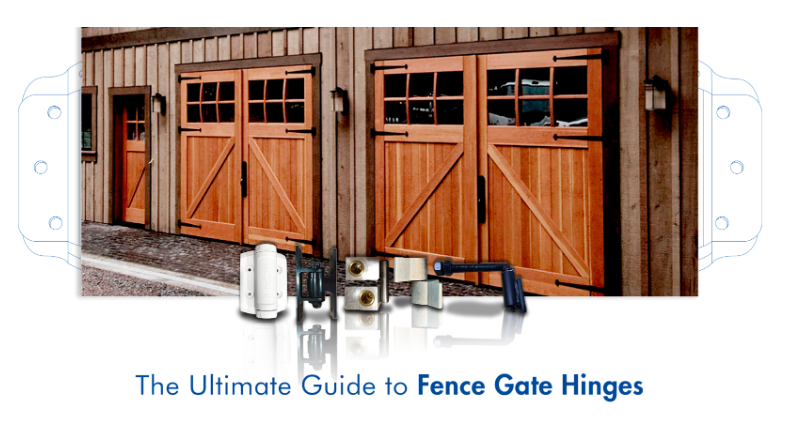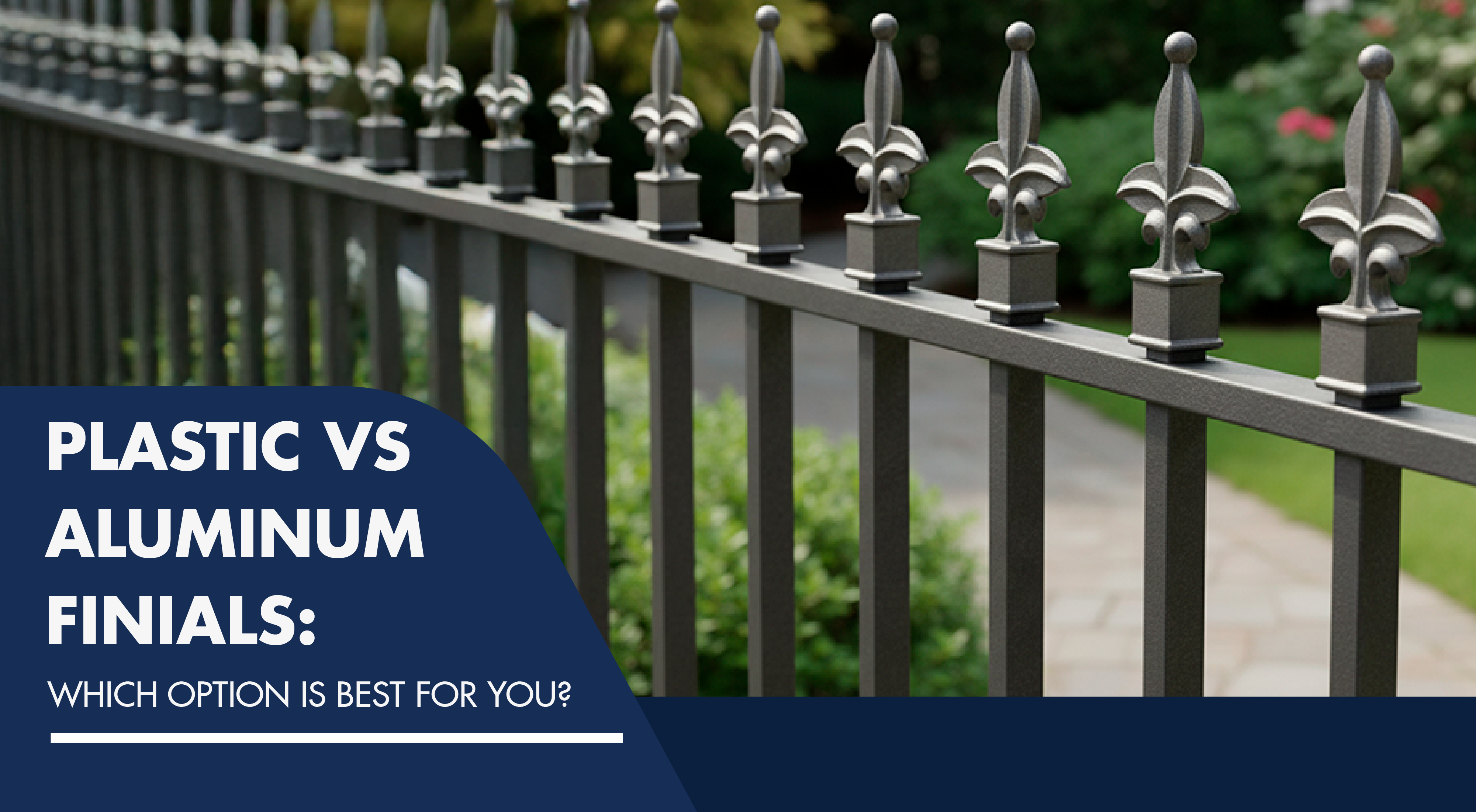A hinge is a mechanical component working like a bearing between two rigid objects, usually permitting only a little amount of rotation around fixed support. An ideal hinge allows for relative rotation between two objects around a set axis of rotation while preventing any additional translation or rotation. Hinges are commonly used in gate installations.
Hinge construction might use either a flexible material or movable parts. When installed properly, hinges provide a smooth operation and also contribute to the gate's overall efficiency. Even though the most fundamental aspects of a gate's construction, such as its design, framing, groundwork, and post-installation, all need to be done correctly. But if you take the time to choose gate hinges wisely, the rest of your hardware will work together harmoniously.
Do you have questions concerning hinges for fence gates or garage doors? If you're concerned with installing a single garden fence gate that opens inward between two wooden posts or a pair of 6-foot gates between brick pillars over rising land or many other circumstances, here is the comprehensive guide to fence gate heavy-duty hinges for you. So keep reading this article for proper and complete guidance.
The Basics for a Fence Gate Hinge

The gate's weight and the door's width must be considered when choosing a gate hinge so that the hinge size and strength might be estimated. The hinges on the fence gate may be more firmly attached and work accordingly if you properly consider the hinge and gate strength to size compatibility. Because a poorly supporting hinge might cause the gate to be disoriented and have trouble locking, or even topple over altogether. If you want to be sure that you're buying a hinge that will best fit your fence gate's design, it's an excellent recommendation to target a high-quality and proper-size hinge.
Major Hinge Categories for Fence Gate

There is a vast range of hinges to use for exterior gate installation works. A high-quality fence and gate may completely transform the outside of a house, but the proper hinge for your fence gate is worth focusing on. All you need to ponder before buying hinges is the set of requirements for your fence gate and its design, which must be fulfilled.
Here is given the most commonly used hinge types with a brief description below.

Field Gate's Hinge

The remarkable thing about these often used field gates is that they may allow the gates to swing in both directions. Field gate hinges are also known as wrap-around hinges because they encircle the gates rather than open them.
Large, sturdy gates are common in American barns and ranches. Consequently, superior stability and portability of gates need the use of heavy-duty hinges. So these need little upkeep and won't rust or corrode. They are usually made of carbon or stainless steel but may be customized to meet the customer's needs.
It is also important to note that field gate hinges are designed to fit gates with a thickness of 75 millimeters or 3 inches. This is ok for gates used by farmers in their fields since the gates are often roughly made; but, if you have a gate with a smoothed-planed finish, the thickness of the gate will most likely be around 70 millimeters or 2 3/4 inches.
If you want to use field gate hinges, you should use "hinge packer" between the gate and the hinge (on one side), which will make the hinge fit more securely. In most cases, a hinge packer will be crafted from the same kind of wood as the gates themselves.
T-Hinge

T-hinges or Cross Garnet hinges are most commonly used in lightweight gates, like fence gates, garage doors, and shed doors, even its use includes cottage-style fence gates.
The T-hinge consists of a rectangular-shaped joint that attaches to the gate post or door frame and a tapered strap that attaches to the gate. These are available in a variety of sizes and strengths (light, medium, and heavy-duty). Because it is a surface-mounted hinge, it is quite simple to install. Once your gate or door is set in place, you just need to tighten the screws and it is fixed in place.
Band & Gudgeon Hinges

Band and Gudgeon gate hinges are utilized all over the place, including timber fence gates, garage doors, and stable doors. These gate hinges are also known by a few different names like hook and pin, hook and band, and hook and ride hinges.
The Band and Gudgeon hinges are comprised of two individual components: the rectangular hinge plate, which is the part that is attached to the gate post, and the band, which is the part that is attached to the gate itself. The hinge plate is secured to the post using screws, and the band is fastened to the gate using screws as well as one coach bolt.
The Band and Gudgeon hinges have one major drawback: once they are installed, the gates may be removed from the hinge pins with little work. But don't worry about this issue. To get rid of this problem, it is advised that the top hinge pin be installed in the upside-down orientation.
Strap Hinge

A strap hinge has a design that is elongated and slender in appearance. it is constructed up of two separate triangular-shaped pieces of metal that are joined together in the center by a rotating axis. After being fastened to the fence gate, the strap hinge is able to open and shut the gate due to the rotating axis.
Strap hinges are quite similar to other types of conventional hinges; the one aspect that really differentiates a strap hinge from other types of hinges is its elongated and slender shape.
So these hinges provide greater stability even in heavy-duty conditions.
Reversible Hinges

If a fence gate is hinged on reversible hinges, it may swing away from the door opening in a free and unrestricted manner. They achieve this by moving the pivot point of the door in relation to a traditional butt hinge in a different location.
When compared to Band and Gudgeon hinges, reversible hinges are distinguished by the fact that the pin is really linked to the band. You do not have a hinge plate; rather, you have two hinge cups that are positioned above and below the hinge pin, respectively.
Additionally, much as with the adjustable Band and Gudgeon hinges, there is a coach bolt that goes through the hinge and comes out on the opposite side of the gate or door. Because of the size of the hinge cups, you'll need a little bit of extra area on your gate post or door frame to suit these reversible hinges.
This is something you should keep in mind when purchasing these hinges. To utilize them, you won't need any special training in hinge installation; instead, you'll merely need to connect them to the gates' exteriors.
They can be utilized on fence gates and stable doors. They have a more stylistic pleasing look than Band and Gudgeon.
Spring Loaded Hinge

Spring-loaded hinges are different from all the above-discussed hinge types. These hinges are a kind of special hinge that may be pre-set to return to the closed position This kind of hinge is often applied to such places where doors are meant to be closed without any human intervention. Such hinges can also be used for fence gates where an automatic door close facility is needed.
Hook and eye hinge

Hook and eye hinges have an L-shaped hook and an eye-shaped loop or screw as its component parts respectively. This kind of hinge is used for lightweight fence gate applications.
Bullet Hinge
Bullet hinges or weld-on hinges are composed of three major components. These components consist of the leaf side (also known as the female side), the pin side (also known as the male side), and a brush that stands in between the two halves. A brass brushing is applied to steel bullet hinges. The majority of aluminum bullet hinges and stainless steel bullet hinges are equipped with grease fittings. In the majority of instances, grease fittings are optional.

Bullet hinges are specifically designed as two parts that can be welded separately to the user's selected surfaces. As stated previously, these portions are referred to as the female and male barrels. This is the primary reason why bullet hinges are often referred to as barrel or weld-on hinges. The barrel with the pin is known as the male barrel, whereas the barrel without the pin is known as the female barrel. Female barrels are weld on surfaces like doors. To the other hand, male barrels are welded on structural sections such as door frames.
The majority of doors with bullet hinges are lift-off doors, so the barrel without the pin must be placed on top. The explanation for this is because the majority of lift off doors drop, necessitating bottom barrels with exceptional load bearing capacities. The ability to remove the door from its hinges at any time is a major advantage of lift-off doors. It is unnecessary to unscrew each hinge.
Guide to proper fitting of hinge
Hinging a door is a very straightforward task if you take the time to get the measurements right and arm yourself with the right equipment. Hinge installation for an external door is not much different from that of an inside door.
There are three primary categories of door hinges, which are reversible, left-handed, and right-handed. It is necessary to think of how the door will open before going to the hardware shop to buy the hinges.
Buying the right hinge for your gate is the most important job. Once it is done, it's very easy to move ahead. The most efficient method for installing new door hinges is to set the door in place during the installation procedure and fix the hinges.
Let's say you're interested in improving the usefulness, durability, and lifespan of your gates, therefore, to make the best decision, you need to ponder on all of the specific technical aspects, as well as the benefits and possible downsides associated with the hinges. Hoping that this guide might be very informative and helpful for you.








